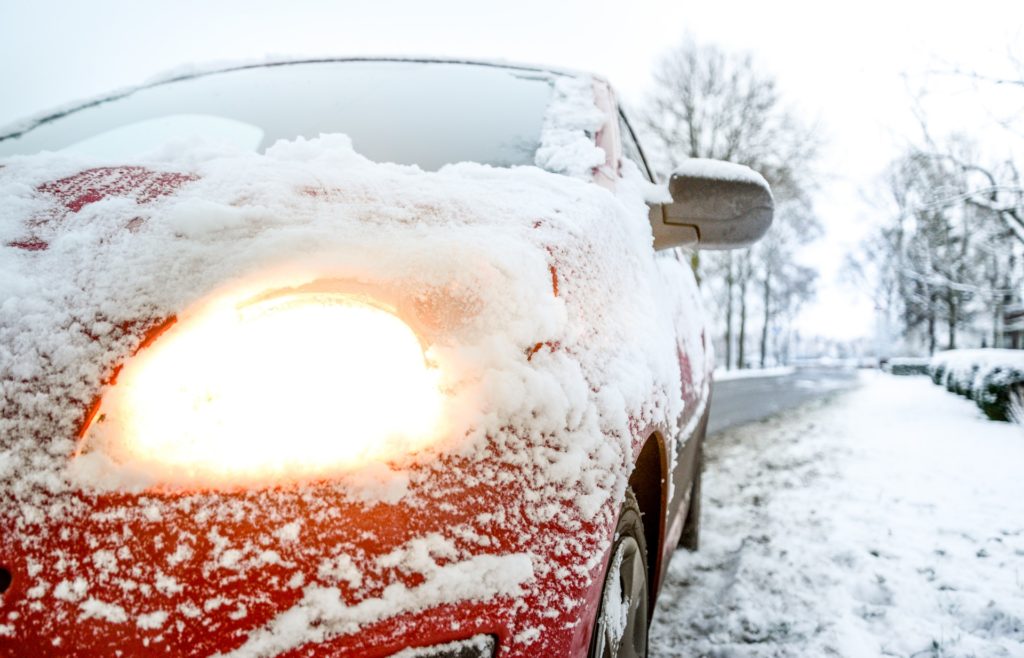
Winter weather is miserable for everybody. Your car suffers during the winter months as much as anyone: The cold, snow, hail, and other adverse weather conditions can do a number on your vehicle if you don’t adopt the proper steps for maintenance and prevention.
Storms and cold temperatures are smacking most regions of the nation right now. You want to be safe on the roads driving a car that will get you from point A to point B without mishap. Here’s what you should be doing to maintain your vehicle.
Park in a Garage or Carport
Protecting your car from winter storms will save you a lot of money over the long run. Hail, sleet, and ice storms are brutal on the body of motor vehicles.
If you can park it in a garage or carport, that will prevent harsh forms of precipitation from wearing down your car or truck whenever you’re not on the road. Some people don’t have the luxury of a garage or carport, however, whether their home lacks it or they’re renters.
It can be costly to build a garage, but you could use a portable carport. You only have to put it up when the weather is bad, and it can be taken down easily if you need the outdoor space.
Check the Battery
Battery failure is probably the number-one complaint of car owners during the winter. When your battery starts to lose juice, freezing temperatures will drain a battery completely. It will freeze, and you might not be able to start your car.
Always check your battery at the start of winter (or as soon as you think of it). You don’t want to be stranded somewhere, and unable to start your car in sub-zero temperatures.
Batteries can be checked at an auto parts store to determine whether they’re going bad. They’re very affordable to replace, and you can probably do it yourself with a good YouTube tutorial.
Get New Tires
Bad tires are the primary reason cars run off the road in the wintertime. Tire tread disappears over time until the tire qualifies as “bald.”
Bald tires are extremely dangerous in icy or snowy conditions because they can’t achieve the necessary traction to avoid slipping on icy roads. To determine whether you need new tires, take a penny and place it between the treads.
If you can see Lincoln’s head, your tires may be considered bald. Do this on every tire, because tires wear differently, even on the same vehicle.
Wash the Under Carriage
To melt the ice and keep the roads as clear as possible, road crews usually lay salt or sand on the road surface. As you drive, the particles get kicked up onto your undercarriage.
These chemicals are not good for the metal of your car, and they prolonged contact will lead to severe rusting. Every couple of months, you should get an undercarriage wash to remove the salt and sand.
At the end of winter, wash your undercarriage again a couple of times to remove the chemicals. It’s well worth a car-wash upgrade!
Check and Replace the Oil
You should be checking and replacing your oil every three months or 3,000 miles with regular oil, and every six months or 6,000 miles with synthetic oil. This will keep your engine and other components of the vehicle running well, and extend the life of your car. A well-oiled vehicle significantly reduces your chances of being stranded on the side of the road with a dead truck or car in subzero temperatures.
Maintain Your Heaters
We don’t think much about the heater in our car until it’s freezing outside. When your car frosts over from the cold or you run into an ice storm( which are common in the midwestern states), you’ll be grateful for a hot defrost that can melt the thick ice from your car with minimal scraping.
Besides that, heat is essential to health and safety. Even if you’re bundled up, it’s not healthy to breathe in freezing cold air constantly and expose your face and hands to very low temperatures. If the thermometer dips below freezing, you run the risk of hypothermia.
Be Prepared in Case of Emergency
We’ve probably all seen a car in the ditch during or after a winter storm. It’s easy to feel sorry for people in that situation, and hope it never happens to us.
You might not be so lucky, however. If it should happen to you, you’ll be grateful you took the time to prepare in advance.
Buy an emergency kit from a department or automotive store. It should contain jumper cables, a blanket, flashlight, first-aid kit, and a few other emergency essentials.
You might be wise to add a few more blankets, a shovel, non-perishable food items, and water to keep you healthy if you’re ever stranded in a snowstorm.